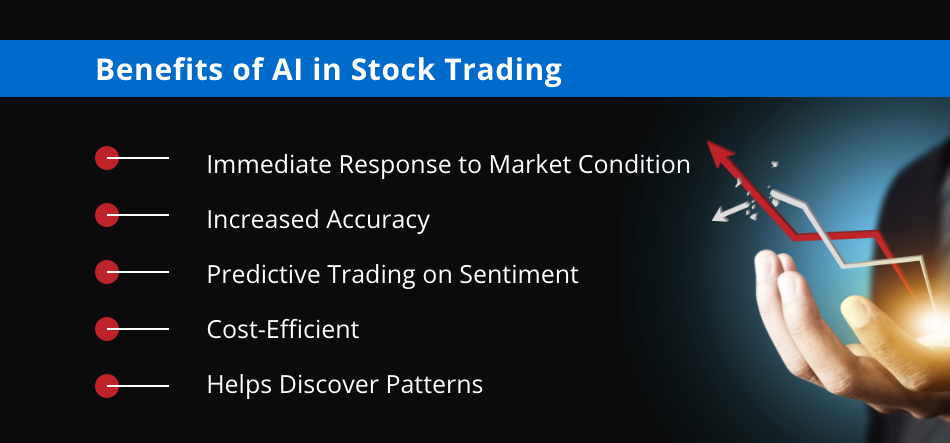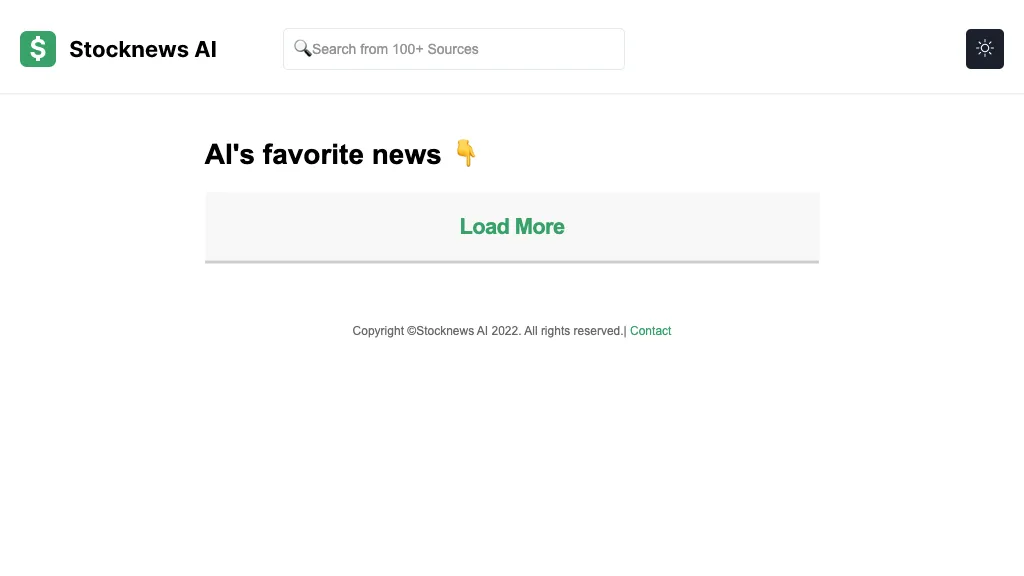20 Pro Info To Deciding On AI Stock Predictions Analysis Websites
20 Pro Info To Deciding On AI Stock Predictions Analysis Websites
Blog Article
Top 10 Tips For Evaluating The Strategy Customization Of Ai Stock Predicting And Analyzing Trading Platforms
AI trading platforms that can predict or analyze stocks are known for their ability to tailor strategies to meet the requirements of users. This allows them to adapt to specific trading goals and conditions, including the risk tolerance. A platform offering a range of customizations can enhance your trading. Below are the top ten tips for assessing the strategy customization capabilities of these platforms:
1. Evaluate Pre-Built Strategy Templates
The variety of templates available: Check whether the platform has an array of built-in trading strategies (e.g. day trading, swing investing, long-term investment).
The ease of use is a good indication.
Performance history: Find out if the platform offers historical performance information on a strategies that have been pre-built.
2. Assessment Custom Strategy
Drag-and-drop tools: Search for platforms with intuitive drag-and-drop interfaces that allow you to design customized strategies.
Look for options to code. For more advanced users, you may need to determine if the platform provides custom-made coding.
Flexibility - Ensure that the platform you select allows you to define rules for entry and exit, as well as parameters for risk management, and other key components of your strategic plan.
3. Check for Backtesting Capabilities
Data historical: See whether you have enough records to backtest your strategies.
Modifiable parameters: Make sure you have the ability to alter parameters (e.g., timeframes, indicators) during backtesting.
Performance metrics - Check to see if your platform has specific performance indicators (e.g. the win rate, Sharpe coefficient, or drawdown) for all backtested strategies.
4. Evaluate Real-Time Strategy Testing
Paper trading or simulation Check that the platform supports paper trading modes that let you try out trading strategies in real time without risking any money.
Live testing: Test your strategies in live markets with small amounts of capital to evaluate their performance.
Real-time adjustment: Determine if it is possible to alter strategies in response to market conditions.
5. Examine the Integration using technical indicators
Indicator Library: Verify that the platform includes an indicator library that is technical (e.g. moving averages, RSI or MACD).
Custom indicators: Ensure that you have the ability to import or develop custom indicators for your strategies.
Indicator combinations: Verify whether the platform permits multiple indicators to create more complicated strategies.
6. Check for Risk Management Tools
Stop-loss/take-profit: Ensure the platform allows you to set stop-loss and take-profit levels within your strategies.
Position sizing. Consider whether you could set up rules to size positions (e.g. percentage or a fixed amount) and manage the risk.
Risk-reward: Check if your platform lets you set risk-reward for each strategy or trade.
7. Evaluate Multi-Asset Strategy Support
Asset Classes: Make sure that the platform supports strategies for a variety of asset classes (e.g. ETFs and Options, Forex, Stocks).
Cross-asset strategy: See whether you can develop strategies that incorporate multiple asset classes (e.g. pairs trading or Hedging).
Market coverage: Make sure the platform you're interested in is covered by the markets you are interested in (e.g. US or international cryptocurrencies, copyright).
8. Review Automation and Execution
Automated trading: Ensure the platform can automate execution of strategies based on predetermined rules.
Types of orders: Ensure that the platform can execute different order types, such as stop, limit and market.
Latency: Verify that the platform you are using has a low latency when trading, particularly if you employ high-frequency strategies.
9. Look for tools to optimize your strategy.
Parameter optimization. Make sure your platform allows you to optimize the parameters of your strategy (e.g. Grid search, Genetic algorithms).
Machine Learning Integration: Determine whether a platform incorporates machine-learning to refine and optimize strategy.
Scenario analysis: Verify whether the platform permits testing strategies under different market scenarios (e.g. bull, bear and volatile).
Review Community Support and User Feedback
User feedback: Conduct user research to determine the efficacy of the platform's customizing strategies.
Community forums - Look for if a platform has a forum that is active and where members can share their own strategies.
Support resources for users - Make sure that the platform has guides and instructions for users to create and enhance strategies.
Bonus Tips:
Free trial period: You are able to test out the customization options of the platform using a an online demo or a trial period for free.
Scalability: Make sure the platform you choose to use can manage complex strategies that change as you trade.
Customer support: Check whether the platform is able to provide assistance with strategy-related issues or questions.
These suggestions will allow you to assess the options for customization of AI trading platforms that analyze and predict the market. So you'll be able choose one that matches your goals in trading, which allows you to refine and implement your strategies. A platform with powerful customization options will allow you to change your strategy to meet changing market circumstances and improve your results. Check out the recommended official statement for investing ai for more examples including ai investing platform, ai for investing, ai trading tools, best ai for trading, ai trading tools, ai investment platform, ai stock trading, trading with ai, stock ai, ai investing and more.
Top 10 Suggestions For Evaluating The Latency And Speed Of Ai Platforms For Stock Prediction And Analyzing
Speed and latency is a critical factor when evaluating AI stock prediction/analyzing trading platforms. This is especially true for high-frequency traders, algorithmic traders as well as active traders. Millisecond delay can have an effect on the profit of a trade. Here are 10 top methods to gauge the speed and latency of trading platforms.
1. Data feeds that are real-time: How to evaluate them
Data delivery speed: Ensure the platform delivers real-time data with the least amount of delay (e.g. less than a millisecond delay).
Nearness of the data source: To reduce the time it takes to transfer data, make sure whether your server's servers are able to be situated near major exchanges.
Data compression - Verify that the platform is using effective data compression techniques to improve speed of data delivery.
2. Time to test trade execution
Processing orders: The platform's capability to execute and process trades swiftly once an order has been submitted.
Direct market access: Make sure that the platform permits direct orders to be sent to the exchange.
Execution Reports: Make sure that your platform offers complete reports on the completion of orders, including timestamps.
3. Examine the Platform's Responsiveness
User interface (UI) speed: See how quickly the platform's UI responds to your inputs (e.g. pressing buttons or loading charts).
Chart updates: Check to see if the charts and visuals are updated in real time without delay.
Performance of mobile apps If you are using a mobile application, make sure it is as fast as the desktop version.
4. Check for Low-Latency infrastructure
Server Locations: Check whether the server used by the platform is with low latency located near major financial exchanges or hubs.
Co-location services: Check whether the exchange offers co-location, which allows the hosting of your trading algorithms on servers near to the exchange.
High-speed networks: Make sure that the platform is running high-speed fiber optic networks or low-latency technology.
5. Assess the Backtesting and Simulation speed
Test the platform's capacity to analyze and process past data.
Simulation latency: Verify that the platform is able to simulate trading in real time without obvious delay.
Parallel processing: Determine if the platform uses parallel processing or distributed computing to speed up the complexity of calculations.
6. Determine API Latency
API response time: This is the speed at that an API platform responds to requests.
Rate limits: Make sure that the API is within reasonable limits for rates in order to avoid delays when high-frequency trading is taking place.
WebSocket support: Find out whether your platform is using WebSocket protocols for real-time, low-latency data streaming.
7. Test the stability of the platform under load
High-volume Trading: Create high numbers of trading scenarios to test if your platform is stable and responsive.
Market volatility Test the platform in periods of high market volatility to see if it is able to handle the rapid price changes.
Testing stress Check if the platform allows you to test your plan under extreme conditions.
8. Examine network and connectivity
Internet speed requirements. Make sure that your internet connection meets standards for your platform to ensure the best performance.
Make sure there aren't any redundant connections.
VPN latency. If using the VPN be sure to check whether it causes a significant amount of latency.
9. Make sure to look for speed optimization features
Pre-trade analyses: The platform should provide pre-trade analysis to help optimize process of routing orders and speed up execution.
Smart order routing (SOR): Verify whether the platform utilizes SOR to determine the most efficient and most cost-effective execution locations.
Use the tools available on the platform to analyze and monitor latency in Real-Time.
Review Benchmarks and User Feedback
User reviews: Look for user feedback on the platform to get an idea of its speed and speed.
Third-party Benchmarks: Find independent benchmarks that evaluate the speed of a platform with its peers.
Case studies: Determine whether the platform has instances or case studies that highlight the low-latency features.
Bonus Tips
Trial period: Test out a free test or demo version of the platform to test the performance of the platform in real-world scenarios.
Support for customer - Make sure there is support available to address issues related to latency, optimization, or any other problems.
Hardware requirements: Check whether the platform requires special hardware (e.g. high-performance PCs) to run at maximum speed.
These guidelines will assist you assess the speed and duration of AI software for predicting and analyzing stocks. So, you'll be able to select a platform that meets your requirements while also reducing delays. A low latency is essential for high-frequency traders and algorithmic traders. Even the smallest delay can have a huge impact on profitability. Read the top best stock prediction website info for blog examples including ai in stock market, ai tools for trading, stock trading ai, ai tools for trading, ai software stocks, ai stock predictions, investing with ai, free ai tool for stock market india, ai options, ai for trading stocks and more.